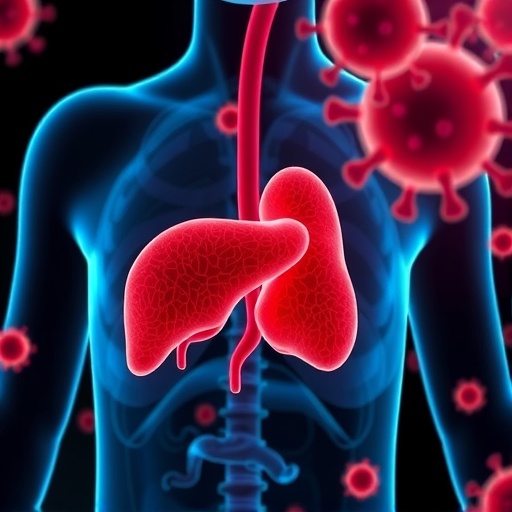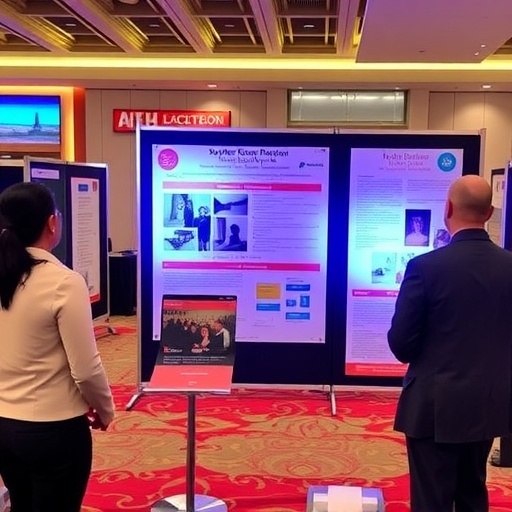
In the relentless fight against liver cancer, a groundbreaking study from Taiwan has shed new light on how often cirrhotic patients infected with hepatitis C should undergo surveillance to catch hepatocellular carcinoma (HCC) at its earliest, most treatable stages. Published in the prestigious journal BMC Cancer, this comprehensive national cohort study challenges the previously empirical norm of biannual ultrasound screenings, revealing nuanced insights that could dramatically reshape clinical guidelines and patient outcomes.
Hepatocellular carcinoma represents a devastating consequence of chronic liver diseases such as hepatitis C virus (HCV) infection, particularly when accompanied by cirrhosis. Early detection remains paramount because it directly correlates with the ability to administer curative therapies, yet surveillance intervals have long been predicated on convention rather than robust, etiology-specific evidence. Recognizing that liver disease progression varies significantly among differing causes, a team of Taiwanese researchers embarked on an ambitious investigation to define optimal surveillance timing tailored specifically to HCV-cirrhotic patients.
Leveraging a nationwide cohort comprising over five thousand newly diagnosed cirrhotic patients with HCV-related HCC between 2007 and 2018, the researchers meticulously categorized patients based on the frequency of their ultrasound screenings. Patients were stratified into four distinct groups according to their surveillance intervals: screened every six months, every 7 to 12 months, every 13 to 24 months, and those who remained unscreened within two years. This stratification allowed for rigorous comparisons of the stage at diagnosis, treatment modalities received, and overall survival outcomes, adjusted rigorously for lead-time biases common in cancer screening studies.
.adsslot_F9kmSj6Mny{width:728px !important;height:90px !important;}
@media(max-width:1199px){ .adsslot_F9kmSj6Mny{width:468px !important;height:60px !important;}
}
@media(max-width:767px){ .adsslot_F9kmSj6Mny{width:320px !important;height:50px !important;}
}
ADVERTISEMENT
The findings emphatically endorse the conventional six-month surveillance interval while casting doubt on the sufficiency of less frequent screenings. Patients adhering to the six-month schedule exhibited the highest odds of being diagnosed at an early stage of HCC, a critical factor influencing successful intervention. Compared to the six-month cohort, those screened annually showed a 31% decrease in early-stage detection odds, while biannual or absent screening groups fared progressively worse, underscoring the importance of regular, timely monitoring.
Beyond early diagnosis, the six-month surveillance group also manifested a markedly increased likelihood of receiving curative treatments. These treatments, ranging from surgical resection to local ablation, have time-sensitive windows during which they offer the most profound survival benefits. The decrement in odds of curative treatment receipt was substantial even with modest increases in screening intervals, reinforcing the clinical imperative for adherence to the semiannual guideline.
Survival analysis further solidified the advantage of frequent surveillance. The six-month group demonstrated the lowest hazard ratio for all-cause mortality, even after adjustment for lead-time bias, a statistical correction essential to ensuring that observed survival benefits are not merely artifacts of earlier detection. Patients undergoing longer interval screening or remaining unscreened faced significantly heightened mortality risks, a stark illustration of surveillance frequency translating into life-or-death consequences.
Delving deeper, the study illuminated specific patient subgroups within the six-month cohort who derived enhanced survival benefits. Cirrhotic HCV patients presenting with alpha-fetoprotein (AFP) levels below 20 ng/ml, a marker of tumor burden, exhibited better outcomes, as did those with Model for End-Stage Liver Disease (MELD) scores under 20, indicating less advanced liver dysfunction. Additionally, individuals with cirrhosis durations between three and five years constituted a critical window where surveillance optimization is particularly vital, suggesting nuanced timing considerations in patient monitoring.
These revelations resonate powerfully within clinical spheres, especially considering the heterogeneity of liver disease trajectories. The empirical “one-size-fits-all” approach to HCC surveillance has often neglected patient-specific risk profiles, potentially undercutting early intervention opportunities. This study advocates for tailored surveillance strategies that balance resource utilization with maximal patient benefit, sparking discussions about individualized care paradigms in hepatology.
Taiwan’s comprehensive national health databases afforded a rare opportunity for large-scale, longitudinal observation with robust data quality, lending substantial weight to these conclusions. The inclusion criteria, focusing solely on HCV-related cirrhosis, eliminate confounding from other etiologies such as hepatitis B or alcoholic cirrhosis, thereby refining the applicability of results for this specific high-risk population. This precision is instrumental in guiding targeted clinical practice guidelines globally, particularly in regions burdened heavily by HCV infection.
Moreover, the rigorous statistical methodologies addressed common pitfalls in cancer surveillance studies, such as lead-time bias, which can artificially inflate survival estimates if not carefully controlled. By adjusting hazard ratios accordingly, the researchers ensured that improved survival was genuinely attributable to early detection and consequent treatment, rather than premature diagnosis alone. This analytical rigor enhances confidence in recommending six-month intervals as the gold standard.
In practice, this evidence underscores the necessity for healthcare providers to emphasize and facilitate adherence to biannual ultrasound screening protocols among cirrhotic HCV patients. Barriers to regular surveillance, including logistical challenges and patient education deficits, must be proactively addressed to realize the full potential of these findings. Health systems can leverage these insights to optimize resource allocation, prioritizing intervention efforts toward intervals that demonstrably impact patient survival.
The public health implications are profound. With hepatitis C remaining a prevalent global concern and cirrhosis as a common consequence, refining surveillance opens avenues for reducing the morbidity and mortality burden of HCC. Early-stage diagnosis coupled with access to curative treatments may ultimately improve quality of life and reduce the substantial healthcare costs associated with advanced liver cancer management.
Furthermore, this study invites re-examination of existing international guidelines, paving the way for evidence-based revisions that incorporate etiology-specific recommendations. Future research may expand upon these findings by integrating emerging diagnostic modalities, such as advanced imaging techniques and circulating biomarkers, to further enhance surveillance precision and outcome prediction.
As the medical community continues to grapple with the complexities of liver cancer, the Taiwanese national cohort study stands out as a beacon illuminating a clearer path forward. By anchoring surveillance intervals firmly in robust data, it enables more confident, tailored clinical decision-making that can translate directly into saved lives and improved liver cancer prognoses worldwide.
The appetite for innovation in cancer screening is voracious, and studies like this energize momentum toward more personalized, effective preventive strategies. Cirrhotic patients living with hepatitis C face daunting health challenges, but with evidence-backed surveillance schedules, the prospect of catching hepatocellular carcinoma early and treating it successfully becomes an attainable reality rather than a hopeful aspiration.
In conclusion, the research emphatically supports six-month ultrasound surveillance as the optimal interval for detecting early-stage HCC and improving survival in cirrhotic hepatitis C patients. This paradigm champions not only earlier diagnosis and increased access to curative therapies but also the extension of overall survival, marking a pivotal advance in liver cancer management supported by rigorous, real-world data.
Subject of Research: Hepatocellular carcinoma surveillance intervals in cirrhotic patients with hepatitis C infection.
Article Title: Optimal surveillance intervals for hepatocellular carcinoma screening in cirrhotic patients with hepatitis C infection: a Taiwanese national cohort study.
Article References:
Chang, SS., Chen, YC., Hu, HY. et al. Optimal surveillance intervals for hepatocellular carcinoma screening in cirrhotic patients with hepatitis C infection: a Taiwanese national cohort study. BMC Cancer 25, 1141 (2025). https://doi.org/10.1186/s12885-025-14551-9
Image Credits: Scienmag.com
DOI: https://doi.org/10.1186/s12885-025-14551-9
Tags: chronic liver disease managementcirrhosis and HCVearly detection of liver cancerhepatitis C surveillance intervalshepatocellular carcinoma detectionliver cancer screening guidelinesnational cohort study on liver canceroptimal screening times for HCCpatient outcomes in liver cancertailored surveillance for cirrhotic patientsultrasound screenings for liver cancer





